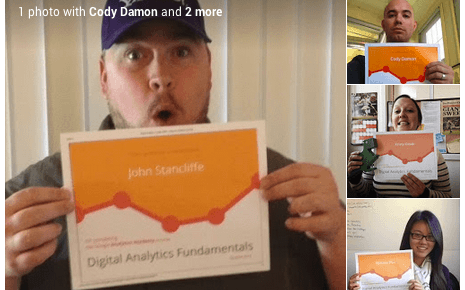
Google Analytics For Nonprofits: Don’t Market Without it
We ask all of our new clients two fundamental questions: What are your organizational goals, and how are you currently tracking those goals through your digital efforts?
These questions get to the heart of what it takes to develop and maintain a successful digital marketing strategy. Data is at the heart of the “Media Cause approach.” Knowing the types of posts that receive a lot of engagement on Facebook and Twitter and the number of website visitors from Google Ad Grants ads are not sufficient for us. We want to know how every single piece of your organization’s digital marketing plan is connected to its goals.
With free, powerful tools like Google Analytics for Nonprofits, there’s absolutely no reason to not set up systems to track and analyze data. So why do so many nonprofits still have inadequate data measurement plans?
A lot of nonprofits rely on data provided by their content management systems. While these systems do provide a ton of data, the information is not comprehensive. For example, some large content management platforms in the nonprofit sector do not track referral data of transactions. What does this mean? The data provided by a nonprofit’s CMS may not show whether a donor discovered the nonprofit through social media, Google Ad Grants or some other channel. While there are ways to work around CMS shortcomings, it takes someone with deep IT knowledge to create and implement the right tracking codes. This can be time-consuming and expensive.
Now for the good news: We’re going to give you five simple tips to improve your Google Analytics for nonprofits implementation plan. Our team recently completed the Google Analytics Academy training for Digital Analytics Fundamentals – offered for free by Google. Building a solid analytics infrastructure was the most important takeaway for me from the course.
Take a look at our happy faces.
1. Define your measurement plan
Book a conference room. Invite everyone in your organization who has a stake in digital marketing efforts – communications specialists, board members, program managers, IT professionals and decide on concrete goals for your organization. Then decide how these goals could be translated on your website. Do you already have conversion opportunities in place for these goals? If not, figure out who needs to be in charge of getting that done.
2. Document your technical infrastructure
This is where the rubber meets the road. Do you have the technology to track everything you need to track? What are the shortcomings of your CMS? Are you active on mobile? Are you using responsive design on your website? Take into account all of the platforms your organization operates on, so you can make sure to set up proper tracking codes for each one.
3. Create an implementation plan
The two steps above will clarify your goals and environments for tracking. Write down everything that needs to be done. Everything. This is your opportunity to turn your website, mobile app and other technologies into a well-oiled (pardon the expression, environmental groups) machine.
4. Implement your plan
Look at the document you created in the step above, and begin implementing the codes and making other tech tweaks to ensure that you are getting relevant data. Realistically, this could take up to a month. But by this point, you will have a clear, well-documented plan to obtain data, which will help speed up this process.
5. Maintain and refine
Remember: Your website will change, your goals will change and your technology will change. All of these things need to be taken into account continuously to make sure that you are obtaining good data. Our favorite resource to stay updated on Google Analytics is Avinash Kaushik’s blog Occam’s Razor. His blog will teach you everything you need to know about Google Analytics for nonprofits.
Good luck! Send us a note at connect [at] mediacause [dot] org if you have any questions, or leave a comment below.
